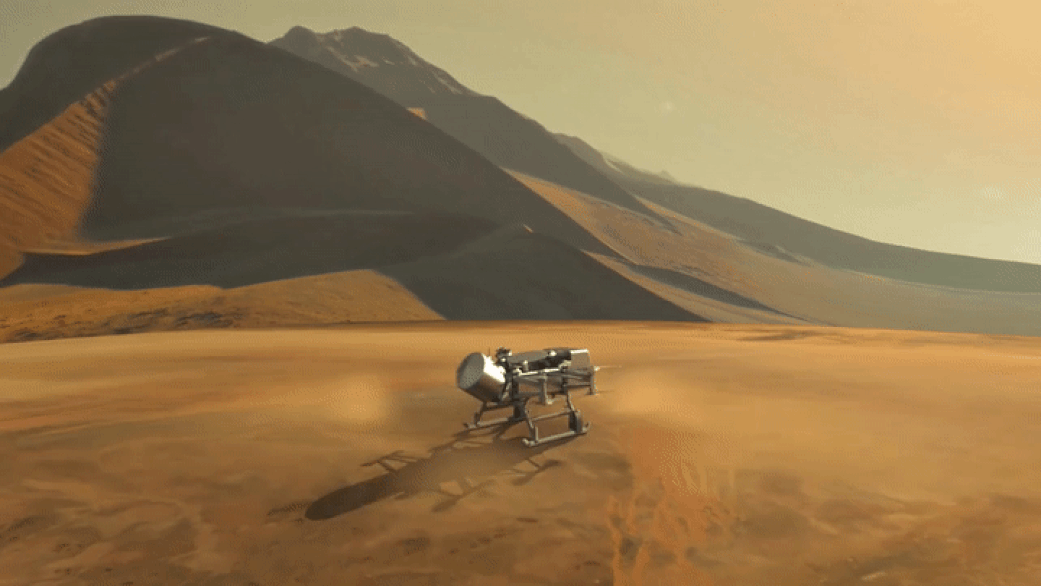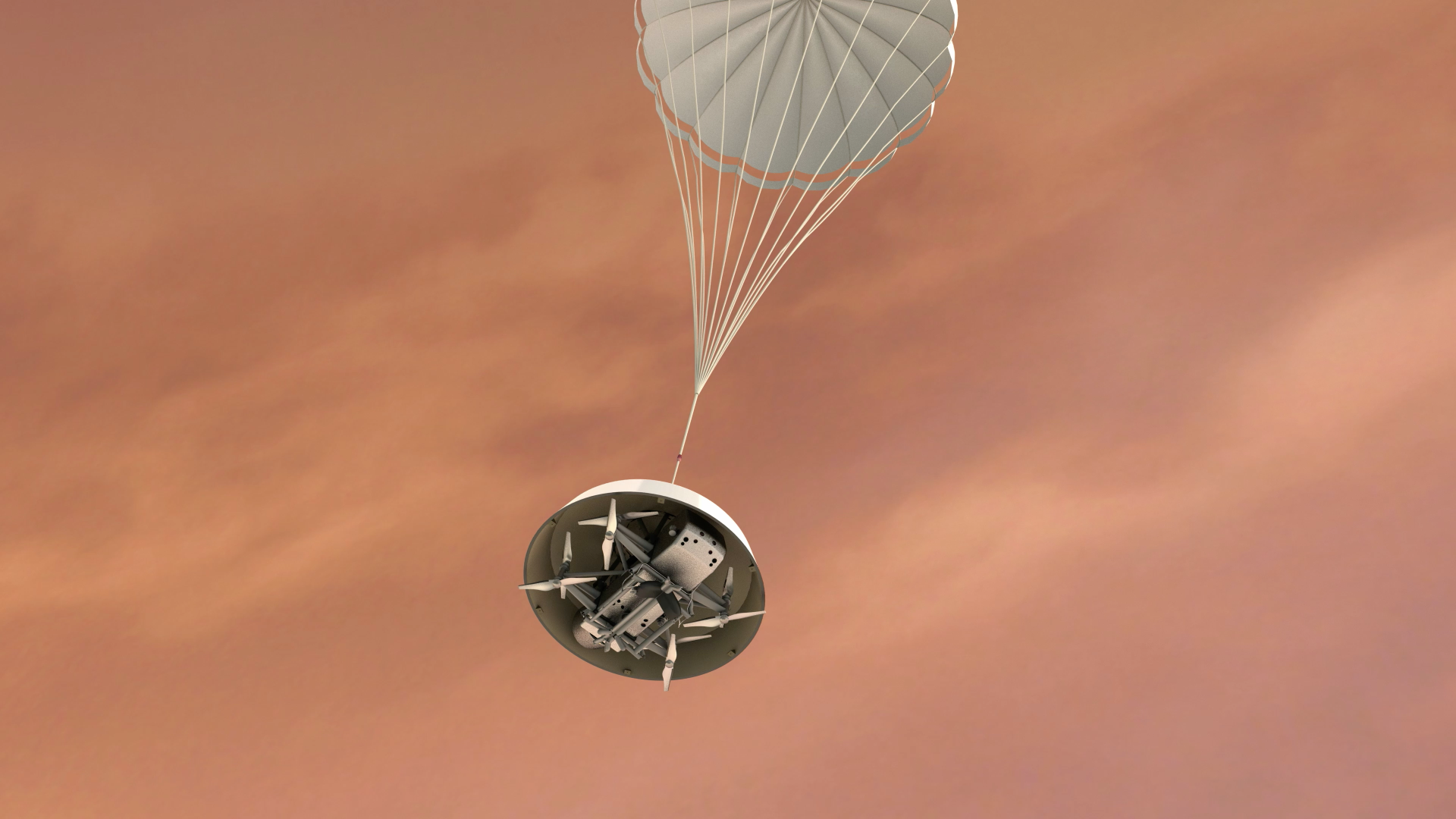The drone which has eight rotors will take advantage of Titan’s dense atmosphere – four times denser than Earth’s – to become the first vehicle ever to fly its entire science payload to new places for repeatable and targeted access to surface materials.

The mission will launch in 2026 and arrive in 2034 and will fly a number of sorties exploring environments ranging from organic dunes to the floor of an impact crater where liquid water and complex organic materials that are key to life once existed, possibly tens of thousands of years ago.
Titan is of huge interest to scientists because its abundant organic material and dense atmosphere, which supports an Earth-like hydrological cycle of methane, clouds, rain and liquid flowing across the surface to fill lakes and seas. Scientists hope that studying the surface in more detail could advance our understanding of how life evolved on earth and even detect signs of past or existing life on Titan itself.
“Visiting this mysterious ocean world could revolutionise what we know about life in the universe,” said NASA Administrator Jim Bridenstine. “This cutting-edge mission would have been unthinkable even just a few years ago, but we’re now ready for Dragonfly’s amazing flight.”
The mission has used data from NASA’s Cassini probe which arrived at Titan in 2004 and made more than 100 close flybys, carrying out detailed studies of the moon’s atmosphere and mapping much of its surface.
The Dragonfly drone will initially land at the equatorial “Shangri-La” dune fields, which are similar to the linear dunes in Namibia in southern Africa. It will explore this region in short flights, building up to a series of longer “leapfrog” flights of up to five miles (8km), stopping along the way to take samples from compelling areas with diverse geography.

It will finally reach the Selk impact crater, where there is evidence of past liquid water, organics – the complex molecules that contain carbon, combined with hydrogen, oxygen, and nitrogen – and energy, which together make up the recipe for life. The lander will eventually fly more than 108 miles (175km) – nearly double the distance travelled to date by all the Mars rovers combined.
The Dragonfly drone, which is being led by scientists Johns Hopkins Applied Physics Laboratory, was selected as part of NASA’s New Frontiers program, a series of missions – aimed at advancing our understanding of the solar system. Other missions include the New Horizons mission to Pluto and the Kuiper Belt, Juno to Jupiter, and OSIRIS-REx to the asteroid Bennu.




AI-generated medical responses need monitoring, study finds
This would negate most of the benefit of using AI in the first place, rather like the Locomotive Act 1865 that required any self-propelled road...